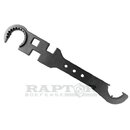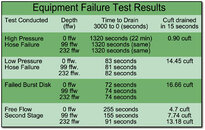Agreed. Too many dive shops think that cylinder valves only need to be a little more than hand-tight and LP hoses need to be tightened by leaning hard on a 12" wrench... go figure.
It takes a lot of force to over-torque a cylinder valve — if you define over-torque as stressing the valve body near the point of failure. There is a huge margin between over and under torqued on a cylinder valve. Not that much difference between a LP hose unscrewing under normal handling and stress-cracking the fitting.
---------- Post added May 5th, 2014 at 05:27 PM ----------
Here is a video that will give you a better idea what little-girl snug looks like:
How to Assemble Scuba Regulators - [url]www.simplyscuba.com - YouTube[/url]
It takes a lot of force to over-torque a cylinder valve — if you define over-torque as stressing the valve body near the point of failure. There is a huge margin between over and under torqued on a cylinder valve. Not that much difference between a LP hose unscrewing under normal handling and stress-cracking the fitting.
---------- Post added May 5th, 2014 at 05:27 PM ----------
Here is a video that will give you a better idea what little-girl snug looks like:
How to Assemble Scuba Regulators - [url]www.simplyscuba.com - YouTube[/url]







